#waste
Text
The problem is not simply that capitalism produces too much, but that it produces the wrong stuff: SUVs, fast fashion and planned obsolescence instead of public transit, affordable housing and universal healthcare. It overuses resources and still fails to meet even basic needs.
In this respect it is a wildly inefficient system. This is the sort of irrationality you get when production is organized around the interests of corporate profit and elite accumulation, rather than around human well-being and ecology.
Jason Hickel
15 notes
·
View notes
Text

E-Waste Disposal Practices
Estimates put the amount of electronic waste produced annually at around 50-60 million tons, a number that continues to increase. While this is only a small percentage of the total waste produced around the world, the toxic components that can be found in electronic waste can have a disproportionate effect on the environment. Some electronics, like batteries, are prohibited from being disposed of by consumers in the general waste stream (in some countries, at least), but not all electronics have such restrictions. When disposal is used, e-waste typically winds up in landfills or incinerators, both of which can release harmful chemicals to the environment.
With disposal discarded as an option, there are three general remaining scenarios: reuse, refurbishment, or recycling. For the general consumer, the specifics of the more sustainable methods are often irrelevant; individuals need only find a company that collects e-waste. However, research should be done to determine the end location for the waste, as some collection agencies simply ship the waste off to other countries for disposal. (There is also the question of wiping electronics which can contain personal information, but that is a topic for a different forum.)
Sources/Further Reading: (Image source - Earth.org) (EPA) (EPA - Used batteries) (Safety Culture) (EcoWatch) (WHO)
17 notes
·
View notes
Text
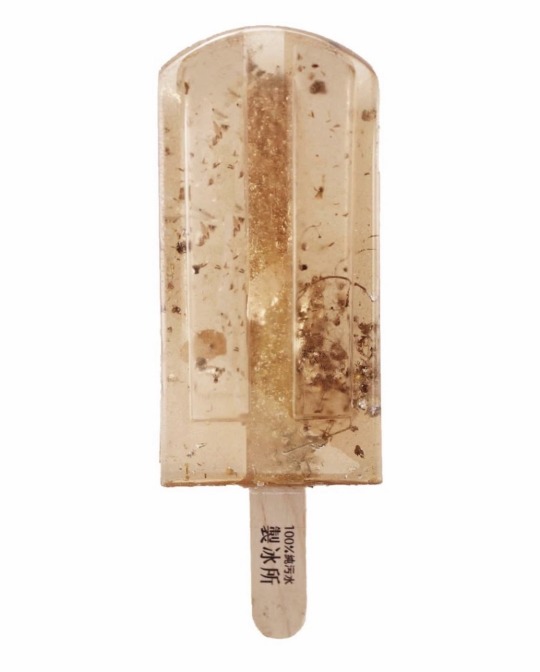







‘Polluted Water Popsicles’ (2017) by: Hung I-chen, Guo Yi-hui & Chen Yu-ti
Addressing the issue of water pollution, the artists collected samples from 100 locations across Taiwan, first freezing the liquids and then preserving their creations in resin.
#trashcore#enviornment#enviormentalism#popsicles#art#resin art#awareness#pollution#aesthetic#2017#taiwan#cottagecore#weirdcore#asia#artblr#waste#trash#resin
18K notes
·
View notes
Text
It’s an open secret in fashion. Unsold inventory goes to the incinerator; excess handbags are slashed so they can’t be resold; perfectly usable products are sent to the landfill to avoid discounts and flash sales. The European Union wants to put an end to these unsustainable practices. On Monday, [December 4, 2023], it banned the destruction of unsold textiles and footwear.
“It is time to end the model of ‘take, make, dispose’ that is so harmful to our planet, our health and our economy,” MEP Alessandra Moretti said in a statement. “Banning the destruction of unsold textiles and footwear will contribute to a shift in the way fast fashion manufacturers produce their goods.”
This comes as part of a broader push to tighten sustainable fashion legislation, with new policies around ecodesign, greenwashing and textile waste phasing in over the next few years. The ban on destroying unsold goods will be among the longer lead times: large businesses have two years to comply, and SMEs have been granted up to six years. It’s not yet clear on whether the ban applies to companies headquartered in the EU, or any that operate there, as well as how this ban might impact regions outside of Europe.
For many, this is a welcome decision that indirectly tackles the controversial topics of overproduction and degrowth. Policymakers may not be directly telling brands to produce less, or placing limits on how many units they can make each year, but they are penalising those overproducing, which is a step in the right direction, says Eco-Age sustainability consultant Philippa Grogan. “This has been a dirty secret of the fashion industry for so long. The ban won’t end overproduction on its own, but hopefully it will compel brands to be better organised, more responsible and less greedy.”
Clarifications to come
There are some kinks to iron out, says Scott Lipinski, CEO of Fashion Council Germany and the European Fashion Alliance (EFA). The EFA is calling on the EU to clarify what it means by both “unsold goods” and “destruction”. Unsold goods, to the EFA, mean they are fit for consumption or sale (excluding counterfeits, samples or prototypes)...
The question of what happens to these unsold goods if they are not destroyed is yet to be answered. “Will they be shipped around the world? Will they be reused as deadstock or shredded and downcycled? Will outlet stores have an abundance of stock to sell?” asks Grogan.
Large companies will also have to disclose how many unsold consumer products they discard each year and why, a rule the EU is hoping will curb overproduction and destruction...
Could this shift supply chains?
For Dio Kurazawa, founder of sustainable fashion consultancy The Bear Scouts, this is an opportunity for brands to increase supply chain agility and wean themselves off the wholesale model so many rely on. “This is the time to get behind innovations like pre-order and on-demand manufacturing,” he says. “It’s a chance for brands to play with AI to understand the future of forecasting. Technology can help brands be more intentional with what they make, so they have less unsold goods in the first place.”
Grogan is equally optimistic about what this could mean for sustainable fashion in general. “It’s great to see that this is more ambitious than the EU’s original proposal and that it specifically calls out textiles. It demonstrates a willingness from policymakers to create a more robust system,” she says. “Banning the destruction of unsold goods might make brands rethink their production models and possibly better forecast their collections.”
One of the outstanding questions is over enforcement. Time and again, brands have used the lack of supply chain transparency in fashion as an excuse for bad behaviour. Part of the challenge with the EU’s new ban will be proving that brands are destroying unsold goods, not to mention how they’re doing it and to what extent, says Kurazawa. “Someone obviously knows what is happening and where, but will the EU?”"
-via British Vogue, December 7, 2023
#fashion#slow fashion#style#european union#eu#eu news#eu politics#sustainability#upcycle#reuse#reduce reuse recycle#ecofriendly#fashion brands#fashion trends#waste#sustainable fashion#sustainable living#eco friendly#good news#hope
10K notes
·
View notes
Text

it just went to waste
#bsd#dazai#bsd fanart#art#fanart#dazai fanart#dazai bsd#iztea draws#bungou stray dogs#illustration#my art#dazai osamu#waste#bandages#concept art
1K notes
·
View notes
Text
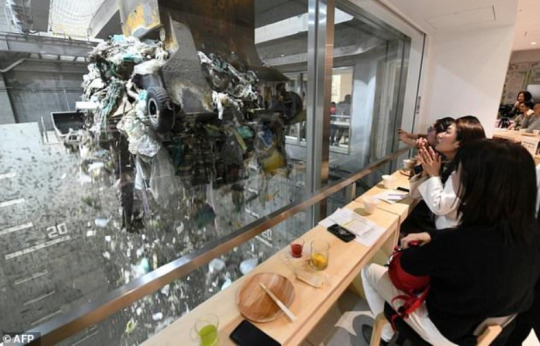

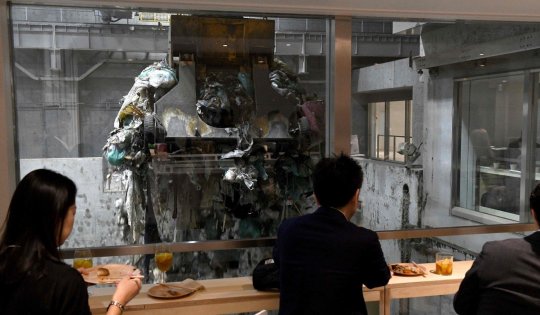
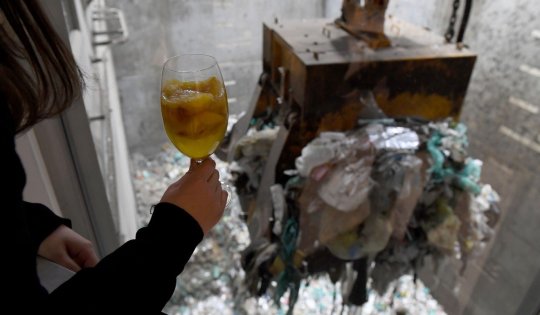
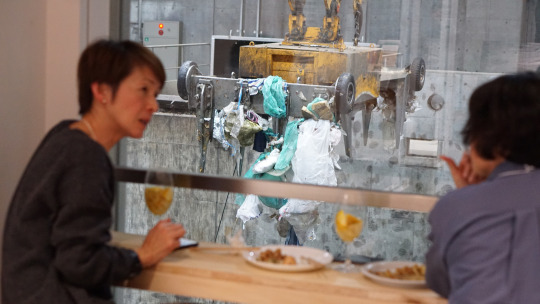

Gomi Pit
1K notes
·
View notes
Text
Plastic producers have known for more than 30 years that recycling is not an economically or technically feasible plastic waste management solution. That has not stopped them from promoting it, according to a new report.
“The companies lied,” said Richard Wiles, president of fossil-fuel accountability advocacy group the Center for Climate Integrity (CCI), which published the report. “It’s time to hold them accountable for the damage they’ve caused.”
Plastic, which is made from oil and gas, is notoriously difficult to recycle. Doing so requires meticulous sorting, since most of the thousands of chemically distinct varieties of plastic cannot be recycled together. That renders an already pricey process even more expensive. Another challenge: the material degrades each time it is reused, meaning it can generally only be reused once or twice.
The industry has known for decades about these existential challenges, but obscured that information in its marketing campaigns, the report shows.
The research draws on previous investigations as well as newly revealed internal documents illustrating the extent of this decades-long campaign.
Industry insiders over the past several decades have variously referred to plastic recycling as “uneconomical”, said it “cannot be considered a permanent solid waste solution”, and said it “cannot go on indefinitely”, the revelations show.
The authors say the evidence demonstrates that oil and petrochemical companies, as well as their trade associations, may have broken laws designed to protect the public from misleading marketing and pollution.
1K notes
·
View notes
Text
In just one month, approximately 462 hectares (4.6 million m²) of woodland, "notably pines and oaks, as well as around 20 hectares of centuries-old olive groves," have been destroyed by Israeli airstrikes, said Georges Mitri, Director of the Land and Natural Resources Programme at Balamand University.
Since the escalation of tensions between Hezbollah and the Israeli army on Oct. 8, the latter has used white phosphorus to set fire to forests and fields in border areas. The 1980 Geneva Convention, which Israel has not signed, prohibits the use of white phosphorous on civilians and in civilian areas due to its devastating effects on humans, animals and the environment.
[...]
Amid the ongoing economic crisis, the attacks targeting olive groves ahead of harvest season have a major negative impact on the local economy in the area.
"Traditionally, people gather around the olive trees, harvest their crops, press their oil together... A big part of their lives is being lost," lamented Younes.
“The olive trees being burned are centuries old," he pointed out. “If we were to replant them today, how long would it be before these fields became productive?” Giving an estimate of the economic losses attributed to the daily fires in the South, Mitri put the figure at nearly 20 million dollars.
In the long term, Younes is particularly concerned about the environmental impact of the phosphorus bombs. "We have no choice but to wait until the end of hostilities before assessing the situation on the ground," he said. In Younes’ view, the greater the rate of absorption of phosphorus into the soil and water, the greater the risk of dramatic long-term consequences on Lebanon’s environment.
I'll add here that southern Lebanon has never fully recovered from 2006. There are still unexploded cluster bombs in the ground, killing and maiming people. There is still chemical contamination. The economic impact on agriculture has never been fully recouped. The cancer rates are still elevated and unaddressed. The labor structure and which crops are grown changed after 2006 and have never reverted. I remember weeping watching the bombing of Gaza in 2021 as I was in the middle of writing a paper about the long term legacies of the July War in Lebanon, with these additional long-term violences of the bombing at the forefront of my mind along with the immediate deaths and tragedies. This is a horrifying compounding of an existing injury, at a time when Lebanon is in economic free fall and (as the article also explains) in the middle of fire season, and with firefighters unable to do much because the area is. being bombed.
840 notes
·
View notes
Photo
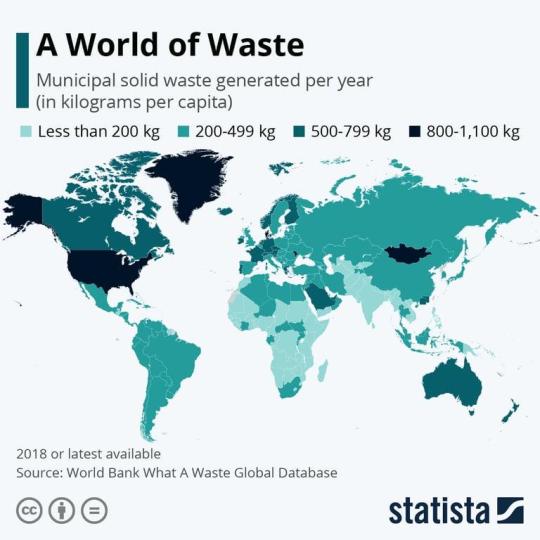
Most wasteful countries in the world
277 notes
·
View notes
Text
The disposal of truckloads of apparently edible oranges at a Metro Vancouver transfer station is highlighting concerns about food waste.
Sonia Rivest, who works as a gardener, began to see the massive piles of oranges show up at the North Vancouver transfer station in early November.
“I just assumed it was fruit that either had gone bad or had some kind of biological issue,” she told Global News.
“It was shocking. Maybe even the next week I saw it again, and I was like, ‘OK, maybe there is a really big amount that went poor and could not be sold or used safely,’ again assuming there was a good reason this was happening.”
As far as Rivest has been able to discern, that wasn’t the case.
Full article
Tagging: @politicsofcanada
#cdnpoli#canada#canadian politics#canadian news#canadian#vancouver#british columbia#BC#food waste#food#waste
249 notes
·
View notes
Text
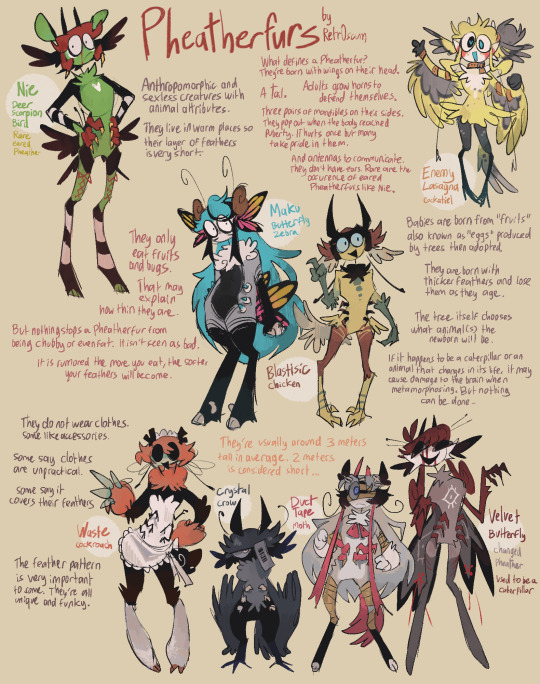
sheet for my private species ig (I might make adopts on toyhouse)
230 notes
·
View notes
Photo

408 notes
·
View notes
Text
Hermit crabs all over the world, which scavenge shells as armour for their bodies, are turning increasingly to plastic waste instead.
The conclusion is based on analysis of photos, taken by wildlife enthusiasts, and published online.
Scientists said they were "heartbroken" to see the extent to which the animals were living in our rubbish.
They said two-thirds of hermit crabs species were pictured in "artificial shells" - items that humans discarded.
The discovery is published in the journal Science of the Total Environment.
Continue Reading.
92 notes
·
View notes
Text

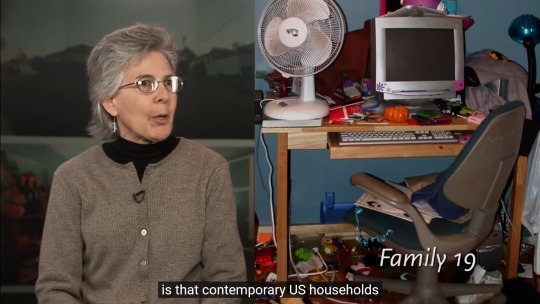
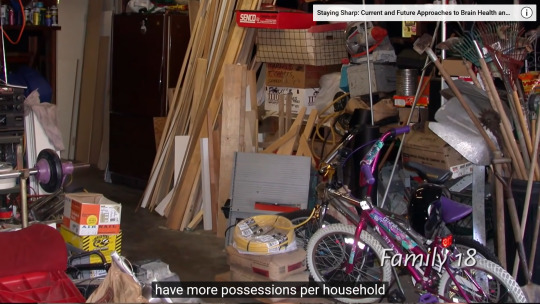




A CLUTTERED LIFE: Middle-Class Abundance - University of California
#youtube recommended this to me and I found it very interesting !#more possessions per household than any society in human history !! right after that they show it's a source of stress instead of happiness#consumerism#usa#middle class#waste#economy#anthropology#humanities#university of california#bee tries to talk#my stuff
307 notes
·
View notes
Text
"Spain’s Catalonia region rolled out a pioneering women’s health initiative [at the beginning of March, 2024] that offers reusable menstruation products for free.
About 2.5 million women, girls, transgender and nonbinary people who menstruate can receive one menstrual cup, one pair of underwear for periods and two packages of cloth pads at local pharmacies in northeast Spain free of charge.
The Catalan government said that the initiative, which is called “My period, my rules,” was meant to “guarantee the right to menstrual equity.” The regional government cited statistics that said 23% of women polled by Catalonia’s public opinion office said they had reused hygiene products designed for a single use for economic reasons.
Tània Verge, Catalonia’s regional minister for equality and feminism, called the program a “global first.”
Scotland’s government passed a law in 2020 to ensure period products are available for free to anyone who needs them. But in comparison with the Catalan program, in Scotland the products are for single use and are distributed through schools, colleges and universities, not pharmacies.
“We are fighting menstrual poverty, which affects one in four women in Catalonia, but is also about gender justice. We are fighting the stereotypes and taboos about menstruation,” Verge told The Associated Press. “And (...) it is about climate justice. We need to reduce the tons of waste generated by single-use menstrual products.”
The distribution of reusable products is also aimed at reducing waste. The regional government said that Catalonia produces about 9,000 tons of waste from single-use menstrual hygiene products.
The reusable products are acquired by the public health care system, which covers the entire population, and distributed by Catalonia’s 3,000-plus private pharmacies. The program cost the regional government 8.5 million euros ($9.2 million).
“I am completely in favor of this initiative,” 29-year-old graphic designer Laura Vilarasa said. “It will give women a product that is absolutely necessary to have for zero cost.”
Spain’s national government passed a law last year granting women with debilitating menstrual pain the right to paid medical leave."
-via AP News, March 5, 2024
#periods#menstrual cycle#menstrual health#menstruation#period poverty#period products#spain#catalonia#waste#women#womens rights#transgender#nonbinary#period underwear#menstrual cup#reusable#reusable pads#good news#hope#feminism#gender equality
216 notes
·
View notes
Text

Sozai Center Designs a Durable Speckled Fabric Made Entirely of Recycled Apple Waste
123 notes
·
View notes